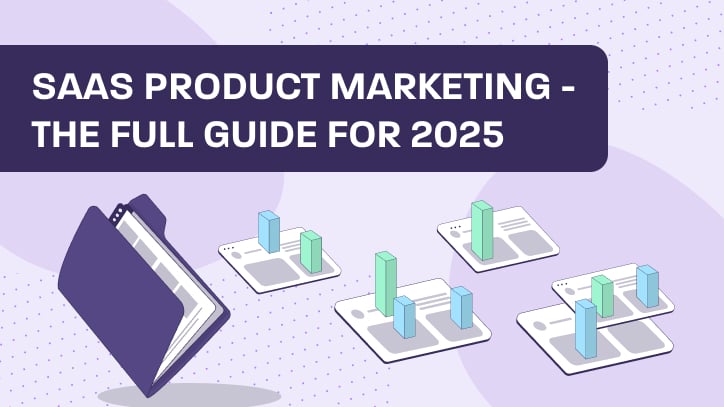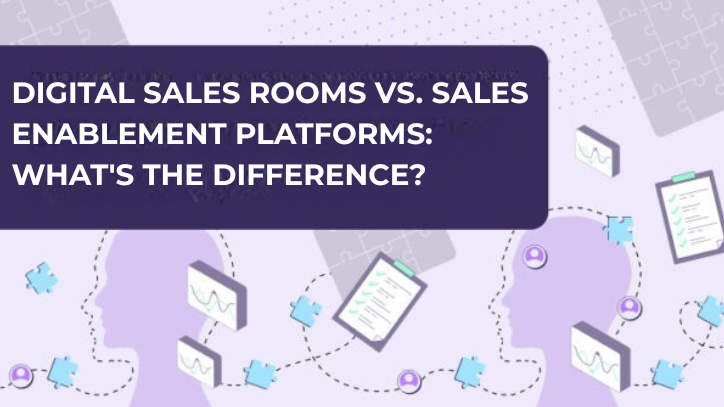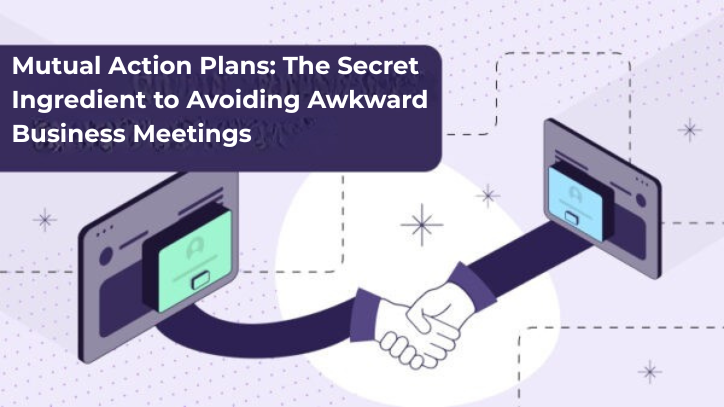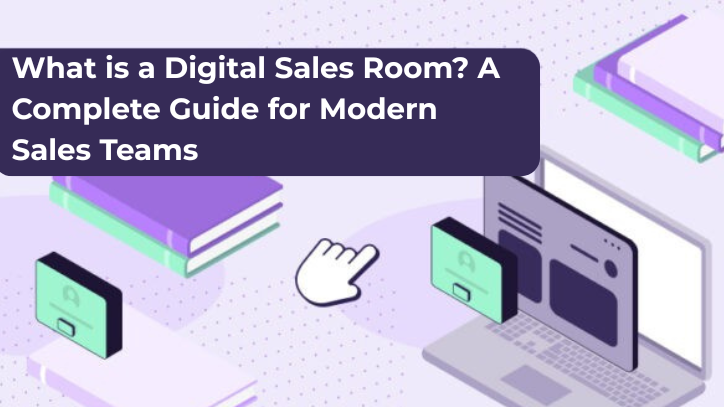If you’ve ever wondered why some Software as a Service (SaaS) products take off while others fade into obscurity, the answer often lies in product marketing.
In the world of SaaS, having an innovative product isn’t enough—how you position, communicate, and market that product to the right audience is what determines success.
Product marketing is the bridge between your software and the users who need it most. It’s about crafting the right messaging, positioning your product effectively in the market, and ensuring customers understand its value—not just when they sign up, but throughout their entire journey with your platform.
Unlike traditional businesses that sell physical or one-time digital products, SaaS companies operate in a highly competitive, subscription-based landscape. Customers aren’t just making a one-time purchase; they’re investing in a recurring service that needs to continuously prove its worth.
This means SaaS marketing goes beyond lead generation—it extends into onboarding, engagement, retention, and expansion.
Think about products like Slack or HubSpot. They didn’t just rely on flashy ads to grow; they leveraged strong product marketing strategies that showcased their value through customer-centric messaging, in-app experiences, and content that educated and nurtured users.
This guide will help you master SaaS product marketing so you can attract the right audience, drive adoption, and sustain long-term growth in 2025.
What is SaaS product marketing?
SaaS product marketing is the strategic process of launching, positioning, and continuously optimizing a software product in the market. It’s not just about attracting new users—it’s about ensuring they fully understand and embrace your product so they remain long-term customers.
At its core, SaaS product marketing focuses on three key elements:
Positioning and messaging:
Your SaaS product needs to stand out in a crowded market. Effective product marketing identifies the unique value propositions (UVPs) and communicates them in a way that resonates with the target audience. For example, Asana positions itself as a productivity tool that eliminates work chaos, appealing to teams looking for better organization.
User adoption and engagement:
Unlike traditional products, SaaS platforms require an ongoing relationship with users. The job doesn’t end when a customer signs up—it’s just beginning. Product marketers implement onboarding strategies, in-app messaging, and educational content (like webinars and tutorials) to ensure users get the most out of the product.
Retention and expansion:
Keeping customers engaged is just as important as acquiring them. SaaS product marketing includes strategies like personalized email campaigns, feature announcements, and customer success initiatives to reduce churn and drive upsells.
For example, Zoom uses targeted prompts to encourage free users to upgrade by highlighting premium features that solve their pain points.
SaaS product marketing is a continuous process. Unlike traditional product launches where the focus is on a one-time sale, SaaS companies need to prove value every month to keep users subscribed.
The most successful SaaS brands excel at reinforcing their value through strategic product marketing that ensures customers don’t just sign up, but stay engaged for the long haul.
SaaS product marketing vs product marketing
At first glance, product marketing and SaaS product marketing might seem interchangeable, but they have fundamental differences. While both focus on bringing a product to market and driving adoption, SaaS product marketing is a continuous cycle rather than a single phase.
Customer lifecycle approach
Traditional product marketing mainly focuses on acquiring customers. For example, a smartphone brand might run a launch campaign, highlight key features, and then move on to the next model. In contrast, SaaS product marketing extends far beyond the initial sale.
Since SaaS customers subscribe on a recurring basis, product marketers must continuously engage and retain them to ensure they don’t cancel their subscriptions. This requires strategies like ongoing onboarding, feature adoption campaigns, and personalized customer success efforts.
Marketing a digital, evolving product
Physical or one-time-purchase digital products don’t change much after launch, but SaaS products evolve constantly. New features, integrations, and updates roll out regularly, which means marketing efforts must also evolve.
For example, when ClickUp launched its AI-powered features, its product marketing team had to educate existing users while also attracting new ones.
Unlike traditional product marketing, SaaS product marketing requires constant messaging updates and user re-engagement.
Selling value over time, not just once
With SaaS, customers evaluate their investment on a monthly or annual basis, deciding whether to continue their subscription. This means product marketers must continuously reinforce the value of the service.
A company like Spotify, for example, doesn’t just acquire users—it keeps them engaged through personalized playlists, exclusive content, and special promotions to ensure long-term retention. In contrast, traditional product marketing focuses on convincing customers to buy once, with less emphasis on long-term engagement.
Ultimately, SaaS product marketing requires an ongoing, customer-centric approach. It’s not just about launching a product; it’s about ensuring users continually see value, engage with features, and remain loyal customers.
Businesses that fail to recognize this distinction risk high churn rates, while those that master SaaS product marketing create long-term, scalable success.
How to create a SaaS product marketing plan
A well-structured SaaS product marketing plan is essential for bringing your software to market, driving adoption, and sustaining long-term growth. Unlike traditional product launches, SaaS marketing operates in two distinct phases: pre-launch and post-launch.
The pre-launch phase focuses on market research, positioning, and demand generation, while the post-launch phase centers on adoption, retention, and expansion.
Let’s break down the critical steps in building an effective SaaS product marketing plan.
Know your competitors
Understanding your competitive landscape is the first step in positioning your SaaS product effectively. This goes beyond simply listing competitors—it involves analyzing their strengths, weaknesses, pricing models, customer feedback, and go-to-market strategies.
For instance, when ClickUp entered the project management space, it wasn’t just competing with Asana and Trello. Instead of being a “me-too” product, ClickUp positioned itself as an all-in-one solution by highlighting the inefficiencies of using multiple tools. This differentiation helped it carve out a unique market position.
To conduct a competitive analysis:
- Identify direct and indirect competitors.
- Compare feature sets, pricing, and messaging.
- Analyze customer reviews and identify gaps in competitor offerings.
- Monitor their content marketing and social media strategies.
By doing this, you can refine your product positioning and messaging to highlight what sets your SaaS solution apart.
Define your ideal customer persona
Not every business or user is the right fit for your SaaS product. Identifying your Ideal Customer Profile (ICP) helps you craft targeted messaging and prioritize marketing efforts.
Your ICP should include details like:
- Industry and company size (e.g., small businesses, enterprise clients)
- Pain points and goals (What problems are they trying to solve?)
- Job roles (Who makes the buying decision and who uses the product daily?)
- Preferred communication channels (Are they active on LinkedIn, forums, or industry events?)
Take HubSpot as an example. It originally targeted small businesses needing a simple CRM but later expanded its ICP to include enterprise clients. This shift influenced its marketing messaging, product features, and customer onboarding experience.
The more refined your ICP, the easier it is to create marketing campaigns that resonate with the right audience.
Craft a strategic narrative and positioning
Your SaaS product isn’t just a set of features—it’s a solution to a pressing problem. A strategic narrative gives your product a story, making it easier for customers to connect with its value.
Andy Raskin’s “Promised Land” narrative framework is a great way to frame your product’s story:
- Paint the current industry problem – Show why the status quo is broken.
- Present your product as the solution – Explain how your SaaS product addresses the pain points.
- Demonstrate transformation – Show how customers’ lives improve after using your product.
For example, Slack’s early messaging wasn’t about “team communication software.” Instead, it positioned itself as the solution to “email overload”—a message that resonated deeply with its audience.
Positioning is just as critical. Your SaaS product should have a unique place in the market that avoids direct competition with established players. If you’re launching an AI-powered content writing tool, positioning it as a “faster alternative to hiring writers” rather than a generic “AI writing assistant” can make a significant difference.
Set measurable goals and key performance indicators (KPIs)
A marketing plan is only effective if you can measure its success. Setting clear Objectives and Key Results (OKRs) ensures you track meaningful progress.
Some essential SaaS marketing KPIs include:
- Customer acquisition cost (CAC) – How much does it cost to acquire a new customer?
- Monthly recurring revenue (MRR) and annual recurring revenue (ARR) – How much predictable revenue is generated?
- Activation rate – The percentage of users who reach a key milestone (e.g., setting up an account, integrating with a tool).
- Customer retention rate – How many customers stay after their first billing cycle?
- Churn rate – The percentage of customers who cancel their subscription.
- Net promoter score (NPS) – How likely are users to recommend your product?
For example, Notion tracks user activation by measuring how many new users create three or more pages in their first week. This metric helps determine whether users understand the product’s value quickly enough.
Setting these benchmarks early ensures your marketing efforts stay aligned with business goals.
Choose the right marketing tactics and channels
SaaS marketing requires a multi-channel approach to reach potential customers effectively. However, instead of trying everything at once, focus on a few high-impact tactics and scale from there.
Key marketing tactics for SaaS businesses include:
- SEO-driven content marketing
- Create blog posts, case studies, and whitepapers targeting relevant keywords.
- Optimize landing pages for search visibility.
- Build backlinks from industry-related websites.
- Freemium and free trial models
- Offer a limited version of your product to let users experience its value.
- Convert free users to paid users through targeted upsell strategies.
- Product-led growth (PLG)
- Use in-app prompts and onboarding checklists to guide users.
- Offer referral programs and community-driven incentives.
- Paid advertising and retargeting
- Use Google Ads, LinkedIn Ads, and Facebook retargeting to bring back lost leads.
- Test different ad creatives to see what resonates best.
- Partnerships and integrations
- Collaborate with complementary SaaS products (e.g., a CRM integrating with an email marketing tool).
- Leverage co-marketing efforts like joint webinars and case studies.
Each tactic should be tested and optimized over time. If organic SEO brings in high-quality leads, double down on it. If LinkedIn Ads aren’t generating conversions, pivot to a different approach.
Building a SaaS product marketing plan isn’t a one-time effort—it’s an ongoing strategy that evolves as your business grows. By deeply understanding your market, crafting compelling messaging, setting measurable goals, and choosing the right marketing tactics, you can position your SaaS product for long-term success.
The companies that succeed in 2025 won’t just have the best products; they’ll have the best marketing execution. The difference between an underperforming SaaS company and a high-growth one is how effectively they communicate their value, engage customers, and drive sustainable growth.
Automation of SaaS product marketing
Marketing automation is an essential tool for SaaS companies looking to scale their product marketing efforts efficiently. It involves using specialized software to handle repetitive marketing tasks—such as onboarding emails, feature announcements, customer segmentation, and lead nurturing—allowing marketing teams to focus on strategy and optimization rather than manual execution.
Why is automation so crucial for SaaS businesses? The nature of SaaS marketing is highly dynamic, requiring continuous engagement to convert trial users, reduce churn, and drive product adoption.
Unlike one-time purchase products, SaaS businesses rely on ongoing customer relationships, meaning every interaction needs to be timely and personalized. Manually managing these interactions is impractical, especially as your customer base grows.
For example, imagine an early-stage SaaS company that gains 500 new signups per day. Sending personalized onboarding emails, tracking user activity, and following up on engagement manually would be overwhelming.
With marketing automation, these processes happen seamlessly—users receive customized emails, in-app notifications, or targeted ads based on their behavior, ensuring a smooth user journey without requiring human intervention.
By implementing automation, SaaS companies can:
- Improve customer onboarding experiences
- Reduce churn by triggering personalized re-engagement campaigns
- Streamline product updates and feature adoption
- Optimize lead nurturing through behavior-based email sequences
- Enhance customer segmentation for targeted messaging
How to create a product marketing automation strategy for SaaS
Implementing a successful automation strategy requires careful planning. Here’s how to build an effective product marketing automation workflow in five steps:
- Map user journey stages
- Identify different user journey phases, such as signup, activation, adoption, and expansion.
- Different personas may experience the journey differently, so segment accordingly.
- Identify tasks to automate at each stage
- Automate repetitive yet essential tasks like:
- Welcome emails after signup
- Onboarding sequences with tutorial videos
- Feature adoption reminders based on user activity
- Re-engagement emails for inactive users
- Personalized renewal reminders for subscriptions
- Automate repetitive yet essential tasks like:
- Set clear goals for automation
- Define what each automation process should achieve, such as:
- Increasing activation rates
- Reducing time-to-value (TTV) for new users
- Improving feature adoption rates
- Minimizing churn and boosting retention
- Choose the right automation tools
- Select tools that align with your goals and channels. Popular choices include:
- Email automation
- In-app messaging
- Lead nurturing
- Analytics and tracking
- Select tools that align with your goals and channels. Popular choices include:
- Measure, test, and optimize
- Track key performance indicators (KPIs) such as email open rates, user activation rates, and conversion rates.
- Conduct A/B tests to determine the most effective automation flows.
- Regularly refine automation sequences to improve performance over time.
By integrating automation into SaaS product marketing, companies can improve efficiency, provide a seamless customer experience, and scale their efforts without increasing manual workload.
Best SaaS product marketing examples
Looking at real-world examples is one of the best ways to understand effective SaaS product marketing strategies. Here are three standout SaaS companies that have leveraged innovative marketing approaches to drive engagement, adoption, and retention.
Coda: Solving the user’s pain point with direct messaging
Coda, a collaborative document tool, excels at market positioning by directly addressing the frustrations of its target audience—users tired of traditional spreadsheets and word processors.
Their homepage messaging in 2020 was a masterclass in simplicity and relatability. Instead of overloading visitors with technical jargon, they used a bold statement:
“Enough of this sheet. It’s time for a new doc that brings words, data, and teams together.”
What made Coda’s marketing approach stand out?
- Straightforward, user-centric messaging – They focus on the pain points rather than just listing features.
- A strong call to action – They immediately invite users to explore the solution.
- A mix of humor and authenticity – This makes the brand feel approachable and human.
By positioning Coda as the hero that saves users from frustrating workflows, the brand effectively drove curiosity, engagement, and trial signups.
HubSpot: Creating valuable gated content for lead generation
HubSpot is a SaaS marketing leader, known for leveraging content marketing and lead magnets to attract and nurture potential customers. One of their most effective tools is the Make My Persona tool—a free, interactive resource that helps businesses create buyer personas.
Why is this such a smart product marketing move?
- It provides immediate value – Users can generate a customized persona within minutes.
- It captures email leads – To receive the final persona document, users must enter their email, helping HubSpot build a qualified audience.
- It educates users – The tool reinforces why buyer personas are important and subtly highlights HubSpot’s CRM and marketing automation features.
By offering free, high-quality content and tools that directly address the challenges of marketers, HubSpot positions itself as an industry authority and builds a pipeline of engaged leads ready for conversion.
Asana: Gamifying the in-app experience
Asana, a project management software, sets itself apart by making work visually engaging and rewarding through gamification.
One of their most unique features is the celebration animations—whenever users complete a task, a whimsical flying unicorn or yeti appears on the screen as a mini celebration.
How does this impact product marketing?
- It creates a positive emotional experience – Users feel a small sense of achievement, reinforcing continued app usage.
- It encourages habit formation – The subtle reward system makes users more likely to stay engaged with the tool.
- It boosts brand affinity and virality – Happy users share screenshots of Asana’s fun interface, providing free word-of-mouth marketing.
This approach has helped Asana drive engagement and reduce churn, proving that SaaS product marketing doesn’t always have to be about ads or email campaigns—it can also be about designing an experience that users genuinely enjoy.
Marketing automation and innovative strategies like gamification and content-driven lead generation have transformed SaaS product marketing. The best SaaS companies don’t just rely on traditional advertising; they focus on user experience, engagement, and solving real-world problems.
By learning from these examples and implementing automation strategies, your SaaS business can build a marketing engine that not only attracts customers but also keeps them engaged for the long haul.
Top SaaS product marketing trends for 2025
The SaaS industry continues to evolve, with businesses relying more than ever on software solutions to streamline operations, enhance productivity, and drive growth. As competition intensifies, companies must stay ahead of emerging trends to differentiate themselves and capture market share.
Here are the top SaaS product marketing trends for 2025 that will shape how companies attract, engage, and retain customers.
Interactive demos take center stage
Static product descriptions and traditional video demos are no longer enough to engage modern SaaS buyers.
In 2025, interactive demos will become a game-changer in SaaS product marketing. These hands-on, self-guided experiences allow potential customers to explore a product’s key features before committing to a free trial or demo call.
Why are interactive demos so powerful?
- They reduce friction – Prospects can test-drive the software without signing up.
- They improve conversion rates – Interactive product tours help buyers see the value immediately.
- They support personalized sales outreach – Sales teams can create customized demos for high-value prospects.
Platforms like Walnut have paved the way for no-code interactive demos, allowing SaaS companies to showcase their products in a more engaging and effective way. Expect more brands to leverage these tools on their websites, in email campaigns, and within outbound sales strategies.
Automated customer support and self-service portals
As SaaS businesses scale, providing personalized, efficient, and round-the-clock customer support becomes critical. The rise of AI-powered automation is making this easier than ever.
In 2025, SaaS companies will increasingly implement:
- AI chatbots and virtual assistants – These bots will handle common inquiries, reducing support ticket volume.
- Automated onboarding sequences – Interactive product walkthroughs and email automation will ensure seamless user activation.
- Self-service knowledge bases – With the great majority of consumers preferring self-service options, businesses will expand FAQ sections, help centers, and video tutorials.
Companies like Intercom and Drift have already integrated AI-driven customer support into their platforms, allowing businesses to deliver faster, more personalized assistance without requiring human intervention.
Data enrichment for hyper-personalized marketing
In an era where buyers expect tailored experiences, data enrichment will play a major role in SaaS marketing. By integrating real-time customer insights, SaaS companies can craft personalized campaigns that resonate with individual users.
What does this mean in practice?
- Enriched CRM data – Companies will combine first-party data with external sources to build richer customer profiles.
- Predictive analytics – AI-driven tools will help SaaS businesses anticipate customer needs and proactively offer solutions.
- Dynamic content personalization – Websites, emails, and ad campaigns will adjust messaging based on user behavior.
For example, HubSpot uses data enrichment to personalize email sequences based on user actions, ensuring leads receive relevant content at the right time. This trend will become a must-have for SaaS companies aiming to optimize engagement and retention.
Feature marketing becomes essential
SaaS products are continuously evolving, with regular feature updates and enhancements. In 2025, feature marketing—the practice of actively promoting new capabilities—will become a core strategy for retaining and expanding customer relationships.
Key feature marketing tactics include:
- In-app notifications – Alerting users about new features inside the product interface.
- Email campaigns – Highlighting updates and how they improve the user experience.
- Video tutorials and GIFs – Demonstrating new capabilities in action.
Take Zoom, for example. Every time it rolls out new features, the company actively promotes updates via email, in-app pop-ups, and social media, ensuring users are aware of its evolving capabilities. This approach helps SaaS companies keep their existing customers engaged while also attracting new users looking for innovative solutions.
AI-driven hyper-personalization
Artificial intelligence (AI) and machine learning (ML) are transforming SaaS marketing by enabling hyper-personalized customer experiences. In 2025, AI-driven personalization will go beyond basic segmentation to deliver dynamic, one-to-one interactions.
Expect more SaaS companies to leverage AI for:
- Personalized onboarding – AI will tailor in-app experiences based on user behavior.
- Dynamic pricing models – Businesses will adjust pricing strategies in real-time based on customer data.
- AI-powered content recommendations – SaaS websites will suggest relevant resources, case studies, or blog posts based on visitor intent.
With SaaS companies seeing accelerated growth through personalization, AI-driven marketing will be an essential component of SaaS growth strategies in 2025.
How Walnut can help with your SaaS product marketing
In an increasingly competitive SaaS landscape, interactive demos have become one of the most effective ways to engage prospects and accelerate sales. This is where Walnut comes in—helping SaaS companies create personalized, no-code product demos that drive conversions.
Traditional product demos often involve lengthy sales calls or pre-recorded videos that fail to showcase the true value of a SaaS product. Interactive demos allow potential customers to explore the product themselves, increasing engagement and reducing the friction of the buying process.
Here’s how Walnut’s interactive demos benefit SaaS companies:
- Shorten the sales cycle – Let prospects experience the product firsthand without scheduling a demo call.
- Improve conversion rates – Engaged users are more likely to convert into paying customers.
- Enhance website engagement – Embed interactive demos on landing pages to capture high-intent leads.
- Enable personalized sales outreach – Sales teams can tailor demo experiences to individual prospects.
Leading SaaS companies use Walnut to create self-guided product tours, showcase new features, and engage website visitors in a more compelling way.
By leveraging Walnut’s interactive demo technology, SaaS businesses can increase buyer confidence and accelerate their sales pipeline—making it a must-have tool for modern SaaS product marketing.





